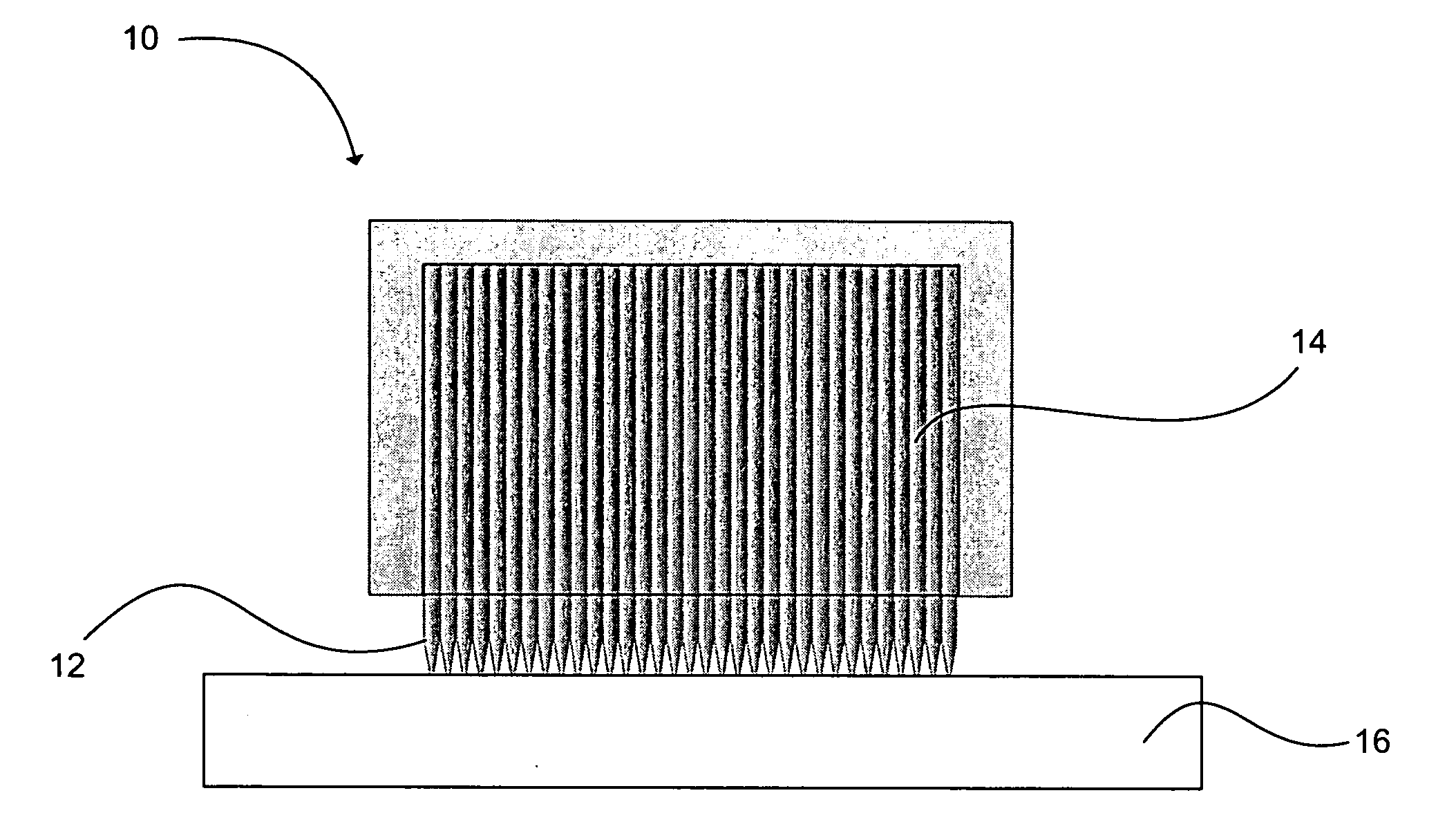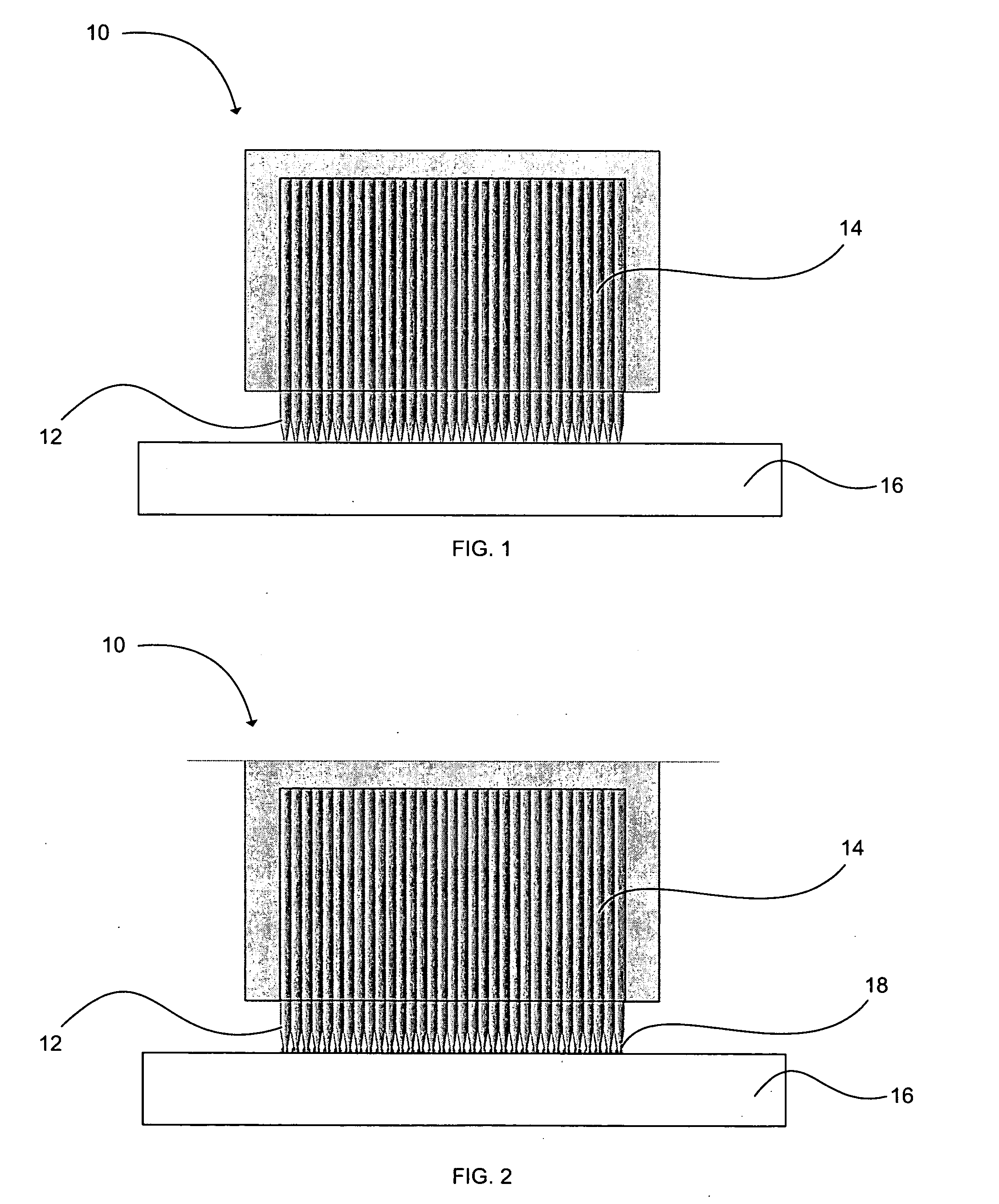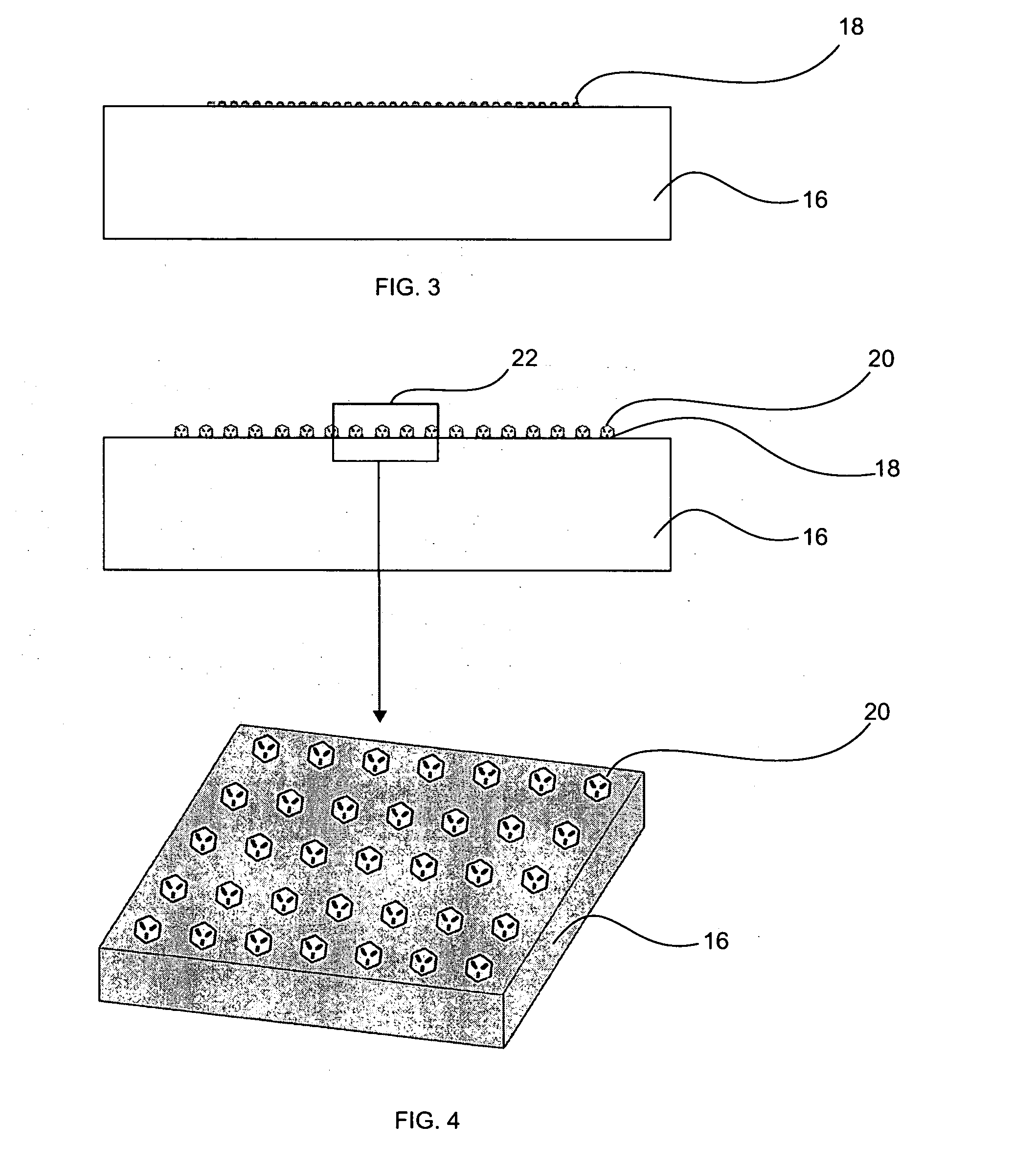Methods for securing individual abrasive particles to a substrate in a predetermined pattern
a technology of abrasive particles and predetermined patterns, applied in the fields of metallurgy, materials science, other chemical processes, grinding devices, etc., can solve the problems of large amount of raw materials, large room for improvement, and large waste of raw materials
- Summary
- Abstract
- Description
- Claims
- Application Information
AI Technical Summary
Benefits of technology
Problems solved by technology
Method used
Image
Examples
example 1
[0055]Diamond crystals with faceted morphology or blocky shape having a size from 20-30 microns are coated with nickel via an electrolysis process to a size of 60-70 microns. Purified natural graphite powder having a grain size of about 20 microns are mixed with INVAR (Fe65-Ni35) powder having a size of about 40 microns at a weight ratio of 1:1. The mixture is then pressed at about 200 MPa to form disks of 0.9 mm in thickness of various diameters, e.g. 37 mm, 61 mm, and 85 mm. An array of adhesive droplets can be screen printed onto an exposed surface of the disks to form a predetermined pattern. Diamond seeds are sprinkled onto the adhesive such that only one diamond seed contacted a single adhesive droplet. The remaining or unattached diamond particles are removed from the substrate.
[0056]After removal of excess diamond crystals, the diamond grid formed on the adhesive droplets is removed from the backing layer and glued to the pressed graphite-metal disks. The gluing may be on th...
example 2
[0058]The same conditions and steps are performed as in Example 1 with INVAR powder being replaced by pure Fe and Ni powder (about 6 microns) at a 2:1 weight ratio. The resulting grown diamond can be of substantially the same quality and sizes.
example 3
[0059]The same conditions and steps are performed as in Example 1 except that the heating time is extended to one hour so the diamond size increased to over 600 microns (25 / 30 mesh). Also, the diamond yield is over 5 carats / cubic centimeter with similar quality as in Example 2.
PUM
| Property | Measurement | Unit |
|---|---|---|
| viscosity | aaaaa | aaaaa |
| size | aaaaa | aaaaa |
| size | aaaaa | aaaaa |
Abstract
Description
Claims
Application Information
 Login to View More
Login to View More - R&D
- Intellectual Property
- Life Sciences
- Materials
- Tech Scout
- Unparalleled Data Quality
- Higher Quality Content
- 60% Fewer Hallucinations
Browse by: Latest US Patents, China's latest patents, Technical Efficacy Thesaurus, Application Domain, Technology Topic, Popular Technical Reports.
© 2025 PatSnap. All rights reserved.Legal|Privacy policy|Modern Slavery Act Transparency Statement|Sitemap|About US| Contact US: help@patsnap.com



